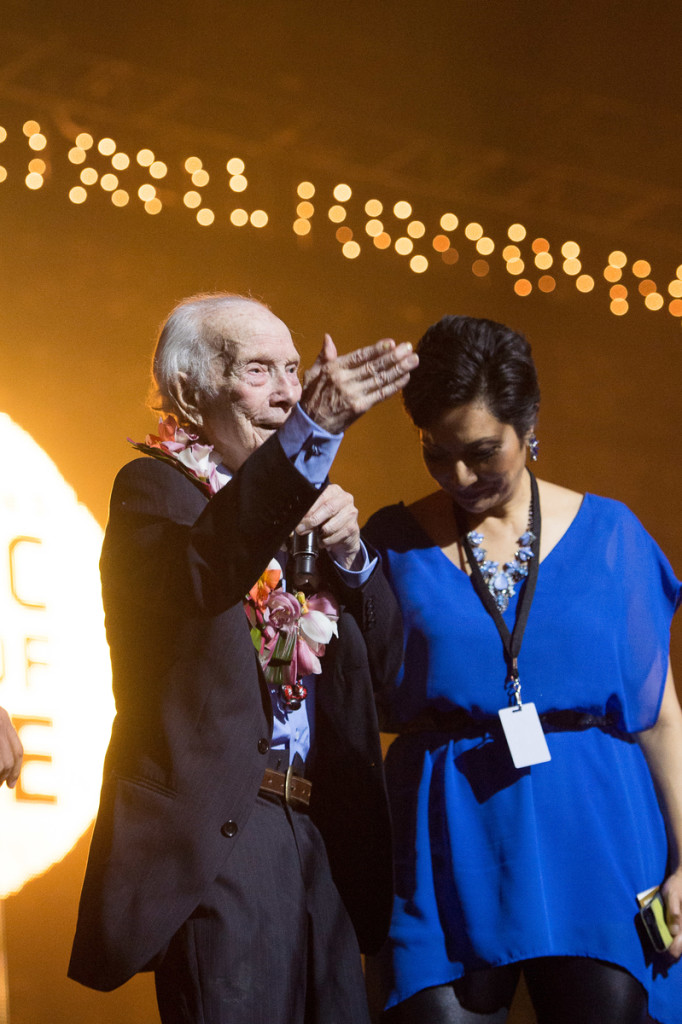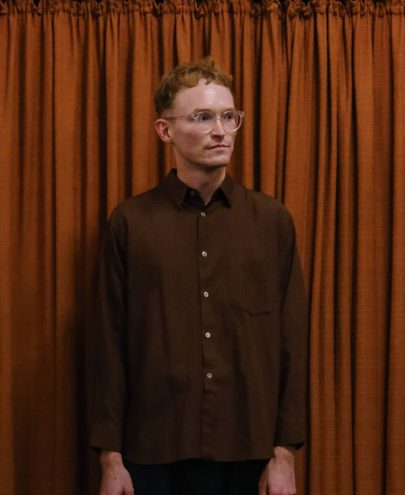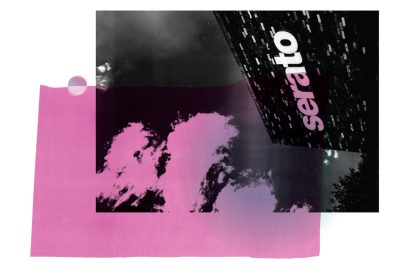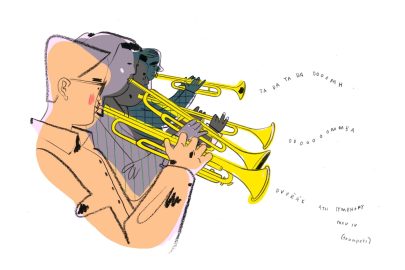Sep 18, 2015 Music
Kody Nielson accepts the 2015 APRA Silver Scroll Award. Photo supplied.
We have a winner, folks. We now know the best New Zealand song of 2015. Or do we?
So now we know. The song of the year is Multi-Love by Unknown Mortal Orchestra. (See the full list of award winners below).
The news was announced at an annual bash held at Vector Arena by APRA (the Australasian Performing Right Association), a collective body made up of songwriters, song publishers and rights holders.
So how does the Silver Scrolls selection process work? The original list of 20 finalists is chosen by “an anonymous judging panel”, and then APRA’s 10,000-plus membership goes to town, choosing a shortlist of five finalists, as well as the winner.
The criteria for selection is quite clear. For instance, the songwriter must be an APRA/AMCOS member, and the entry must be for a popular song that is available to buy during a set period.
Less clear is the criteria followed by judges. In the interests of transparency, it would be useful to know who is on that “anonymous judging panel” that wields such extraordinary power that it can nominate the longlist of 20 finalists. Who are these people, and do they know a good song when they hear one? And what constitutes a good song, anyway?
The Silver Scrolls “celebrates outstanding achievement in songwriting of original New Zealand pop music,” but in 2015, how is pop music defined? Hell, how is a song defined?
Lest we forget, this award is all about songwriting, and nothing to do with the charisma of the lead singer, or anything to do with performance. It’s specifically to do with the craft of songwriting.
Fair enough, but can the award even pay lip service to the gamut of songwriting in a year marked by contrasts, and those artists who have moved away from conventional songwriting skills to composing on laptops or even iPhones?
In 2015, is a song still a song? What about hip-hop, where the words are more like punctuation, and the melody might reside in the loop of some sped-up diva? Or metal, where the vocal might have all the melodic invention of Cookie Monster, but the guitar work might contain the tune?
Clearly, some styles will be outside of the Silver Scroll’s remit in terms of both what constitutes a song, and what’s permissible as pop music, but many would beg to differ. Pop music is going in a thousand different directions, and not all pop is popular. But really, if you look at the Silver Scroll winners over the past couple of decades, there’s diversity and difference in spades.
And in any case, there are other Silver Scroll awards in a bunch of categories that don’t quite hit the pop button, including the Maioha Award for contemporary Maori music, the SOUNZ Contemporary Award for modern art music, and others for music in film and television. Which doesn’t mean that whole genres aren’t ignored because they fall between pop and a hard place, but what can you do?
So let’s look at the 2015 shortlist. Does it show any real diversity within the prescribed “outstanding achievement in songwriting of original New Zealand pop music”? Well, yes actually.
The most adventurous piece is the Unknown Mortal Orchestra’s Ruban and Kody Nielson-composed Multi-Love, a song extolling the benefits of a couple getting involved with a third partner. Ooh, saucy! It’s an example of just how inextricably bound the performative and writing aspects of a piece can be.
Yes, Ruban’s crooning, ecstatic vocal is melody-oriented, but if this tune was notated, I wonder if it would hold up, devoid of the odd home-recorded sound of the instrumentation? Also, it’s made in Portland, where Ruban lives, and released through an American record label. How Kiwi is it? While UMO are so impossibly cool it almost seems unfair for them to win awards as well, Multi-Love is a superb piece of twisted pop.
Lorde’s Yellow Flicker Beat was one of her contributions to The Hunger Games: Mockingjay Part 1 soundtrack, and its brooding gospel-tinged vocal line is a real earworm. Although the chorus is predictably ejaculatory (in common with nearly every contemporary American pop song), somehow Ella Yelich-O’Connor and her writing/production partner Joel Little manage to rise above convention with its sheer superiority. But once again, it begs the question posed by so much electronic music: where does production stop and songwriting start?
Lorde’s Yellow Flicker Beat begs the question posed by so much electronic music: where does production stop and songwriting start?
Marlon Williams’ country-imbued style is influenced by generations of pop-country singer-songwriters, from Roy Orbison to contemporary alt-country icons, and the sheer beauty of his singing makes it hard to concentrate on the song itself. Without a doubt, this is a doozy, and contains everything a great song needs: genuine narrative, intense articulation of emotion, and a dramatic arc that just works, all the more so because of the raw subject matter.
Here’s a guy who knows that the craft of songwriting is all about distilling a long-form story into an intense three-minute impression. Of the five finalists, Dark Child (co-composed with Tim Moore) is my favourite.
Quite how Mel Parsons’ Get Out Alive made it onto the finalists list though, is a mystery to me. I guess it’s the kind of thing a judge would go for, because it’s an easy listen: it sounds like a thousand other country-noir tunes, and seeks to tell a dark story about a car crash. I was bored within 30 seconds, because everything about it – the story, the lyrics, the tune – sound so prescribed.
And finally, Anthonie Tonnon’s Water Underground. Tonnon’s a journalist who writes journalistically, which means he tells stories and uses words to make what pass for sharp observations. It seems the world is more impressed than I am. So let’s ignore his Morrissey singing style and Morrissey lyric style, and the jangly guitar drone that unimaginatively runs through much of it. Well, it is one of his better songs, but I find his singing style so full of itself that it’s hard to engage with what he’s going on about.
But hang on a minute, what about the 20-song longlist? Well, I had a trawl through the selection and by and large, I think they got it right in whittling the list down – with the shocking exception of two brilliant songs. SJD’s Little Pieces is a great pop song that lavishes the form with respect, and is unforgettable from the first listen, while Broods’ L.A.F hits the pop g-spot somewhere between Lorde and The Naked & Famous.
The Silver Scrolls may be imperfect in the way awards shows always are – that is, popularity contests don’t always result in reward going to the most deserving victors. But take a look at the pale event it was before Mike Chunn took the reigns and forced its rejuvenation in 1993 (see Russell Brown’s exhaustive piece about that here) and you realise how lucky we are having such a genuinely celebratory local awards show. Happy 50th, Silver Scroll Awards.

The 2015 winners:
The 2015 APRA Silver Scroll Award:
Ruban and Kody Nielson, Multi-Love (Unknown Mortal Orchestra).
The 1981 APRA Silver Scroll Award:
Phil Judd, Wayne Stevens and Mark Hough, Counting The Beat (The Swingers).
The 2015 APRA Maioha Award:
Stan Walker, Vince Harder and Troy Kingi, Aotearoa.
Most Performed New Zealand Work Internationally:
Ella Yelich O’Connor and Joel Little, Royals (Lorde).
Most Performed New Zealand Work In New Zealand.
Matiu Walters, Marlon Gerbes and Priese Board, Special.
SOUNZ Contemporary Award:
Chris Watson, Sings Songs Self.
APRA Best Original Music In A Feature Film Award:
Grayson Gilmour, Consent.
APRA Best Original Music In A Series Award:
Tom McLeod, Girl vs Boy (Season 3).
Inducted Into The New Zealand Hall Of Fame:
Bill Sevesi
Read more: Is this New Zealand’s most underrated musician?;Why 1981 was such an astonishing year for Kiwi pop.





